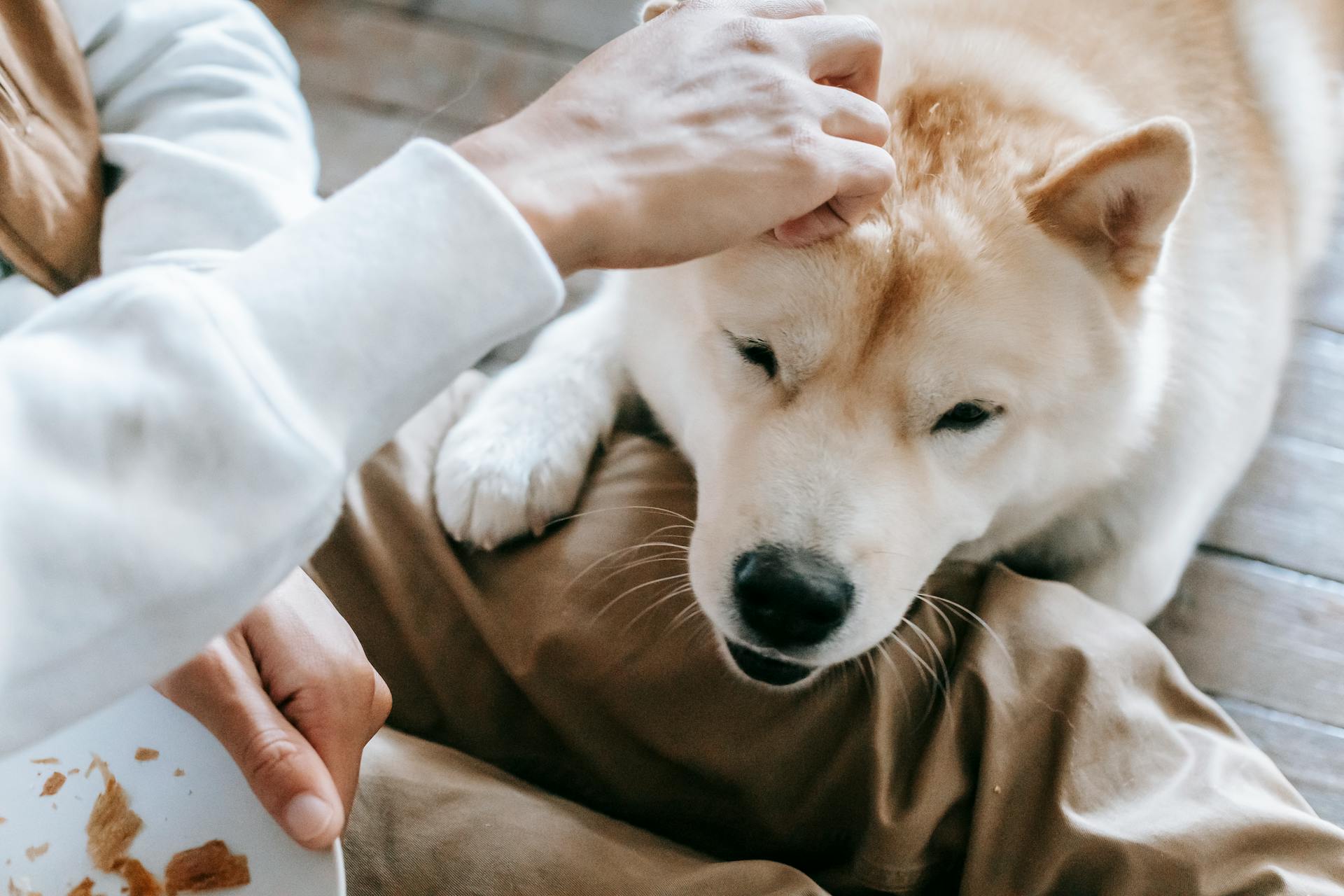
Living with both dogs and cats can be a challenge, especially if you're not aware of the potential risks. Dogs that attack cats often do so due to territorial behavior, which can be triggered by the presence of a new cat in their environment.
Introducing a new cat to a household with an existing dog requires patience and careful planning. According to research, dogs that have been properly socialized to cats from an early age are much less likely to exhibit aggressive behavior towards them.
Some breeds of dogs are naturally more inclined to attack cats than others. For example, breeds like the Cane Corso and the Bullmastiff are often listed as being more aggressive towards cats.
A harmonious home is possible with the right strategies in place. By understanding the potential risks and taking steps to prevent conflicts, you can create a safe and welcoming environment for both your dogs and cats.
Causes of Dog Aggression
Dogs may see your cat as prey due to their natural instincts and high prey drive, which can lead to aggression.
Some breeds have a higher prey drive than others, making them more likely to chase or attack cats.
Aggression can also be a fear-based response in dogs, often triggered by an unpleasant experience involving a cat.
A sudden change in aggressive tendencies could be a sign of underlying illness or pain in your dog.
If you notice your dog becoming aggressive when you pet or speak to your cat, it may be a sign of jealousy, especially if your dog is competing for attention.
Giving both pets equal attention can help address jealousy and reduce aggression.
A different take: Dog to Dog Aggression
Strategies for Preventing Cat-Dog Aggression
Proper training can help your dog learn to live with your cat peacefully. Creating a positive relationship through obedience training will show your dog what's considered good behavior around a cat.
To establish a command that tells your dog to leave a cat alone, use a specific phrase like "leave it", and make sure your dog understands what it means before applying it in an aggressive situation.
You might like: Cat Dog Training
The reward for "leaving it" must outweigh your dog's desire to interact with the cat, which should be tested with barriers before face-to-face interactions.
Safety is paramount when training an aggressive dog to behave around cats and other pets. Keeping your dog on a leash can prevent physical interactions with the cat.
Even if your dog has never shown aggression towards your cat before, keep an eye on their interactions and be prepared to separate them at the first signs of trouble.
Growling, stiff body posture, and still eye glares are all warning signs that your dog could react aggressively towards a cat.
Broaden your view: Cat Aggression towards Dog
Dogs in East Orlando
Dogs in East Orlando have been terrorizing a neighborhood, attacking at least six cats, killing four.
Residents in the area are on edge, with some having lived there for nine years without incident. The neighborhood in question is located between Goldenrod and Union Park in East Orlando.
A pit bull and a Rottweiler are the two dogs responsible for the attacks, with multiple videos showing them chasing and attacking cats.
Neighbors are banding together to find a solution, with some calling for the dogs to be humanely euthanized or removed.
Explore further: Police Dogs Attacking
Aggressive Dog Breeds
If you're considering getting a dog, it's essential to choose a breed that's compatible with your cat. Some dog breeds have a strong prey drive or protective nature that can make them a threat to your feline friend.
Hound breeds, like Beagles and Greyhounds, were originally bred to course after prey, which can pose a threat to cats, especially if not properly socialised from a young age.
Terrier breeds, such as Jack Russell Terriers and Miniature Schnauzers, were bred to hunt vermin, making them a little too interested in chasing a cat, potentially leading to a stressful situation.
Working and guardian breeds, like German Shepherds and Doberman Pinschers, might view a cat as an intruder, which can be intimidating, if not downright dangerous, for a smaller cat.
Spitz breeds, including Siberian Huskies and Alaskan Malamutes, can be aloof with cats and have a strong prey drive, making them a poor choice for a home with a feline resident.
If you're set on getting a dog that's not typically cat-friendly, it's crucial to socialise them extensively and provide a safe space for your cat to retreat to when needed.
Discover more: Breeds of Dogs That like Cats
Frequently Asked Questions
Can a dog that hates cats learn to like them?
While some dogs may not naturally get along with cats, patience and a slow introduction process can help them learn to coexist peacefully. However, their individual personalities will ultimately determine whether they develop a liking for each other.
Sources
- https://thedogwizard.com/blog/how-to-stop-dog-aggression-towards-cats/
- https://www.ksbw.com/article/vicious-dogs-attacking-and-killing-cats-in-hollister/44931351
- https://www.fox35orlando.com/news/residents-say-2-dogs-terrorizing-orlando-neighborhood-killing-cats
- https://www.thesouthafrican.com/lifestyle/pets/do-these-dog-breeds-attack-cats/
- https://www.channelnewsasia.com/singapore/stray-dogs-captured-community-cats-attacked-avs-3769981
Featured Images: pexels.com


